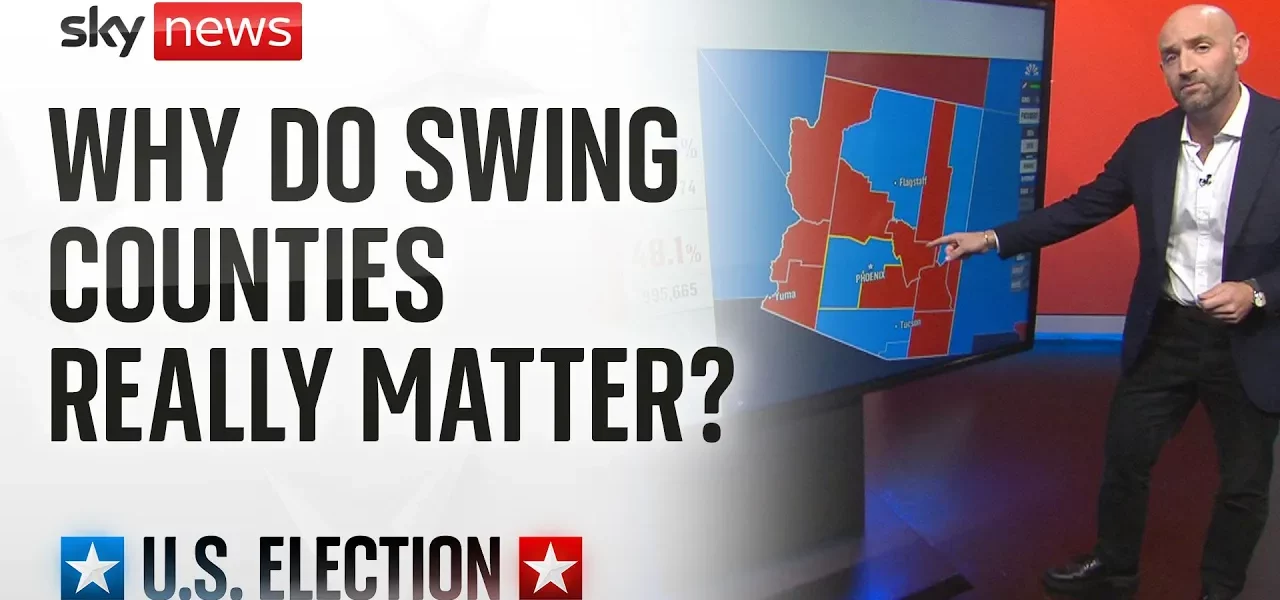Analyzing the Key Swing Counties in the Race to 270 Electoral Votes

This article explores the significance of swing counties in the U.S. electoral landscape, focusing on Maricopa County in Arizona and Erie County in Pennsylvania. Understanding these regions is crucial as they may help determine the outcome of the upcoming presidential election.
Introduction
As the 2024 presidential election approaches, the political atmosphere is charged with anticipation and uncertainty. With various debates behind us, the focus shifts to polling data and electoral strategies. This article delves into the current polling figures, particularly the 2.7-point lead for candidate Harris, and emphasizes the importance of swing counties in this election cycle. Swing counties are pivotal as they often reflect the broader electoral trends and can significantly influence the race to secure the necessary 270 electoral votes.
The Importance of Swing Counties
In the context of U.S. elections, swing counties can be defined as regions that do not consistently vote for one political party, making them critical battlegrounds. While there are over 3,000 counties across the United States, only a select few can sway the results of a presidential election. Below, we explore two of these key counties: Maricopa County in Arizona and Erie County in Pennsylvania.
Maricopa County: A Crucial Swing County in Arizona
Maricopa County, home to Phoenix, is a powerhouse in electoral politics, accounting for 62% of all votes cast in Arizona. This section will examine its demographic makeup and historical voting trends.
Demographics of Maricopa County
- High Hispanic/Latino population
- Above-average income levels
- Diverse urban and suburban areas
The demographic composition of Maricopa County has evolved considerably over the years. With a significant Hispanic/Latino population, this county has traditionally leaned Democratic. However, the political landscape shifted during the 2016 and 2020 elections, showcasing Donald Trump’s ability to garner support from these communities. As such, the voting behavior in Maricopa County is unpredictable and warrants close attention.
Historical Voting Trends
- 2016: Donald Trump won Maricopa County, defeating Hillary Clinton.
- 2020: Joe Biden flipped the county, winning against Trump with a substantial margin.
This historical context provides insight into the county’s potential impact in the upcoming election, as both candidates will undoubtedly aim to secure votes here to inch closer to their electoral goals.
Erie County: A Predictive Powerhouse in Pennsylvania
On the other side of the country lies Erie County, Pennsylvania, a smaller yet equally significant swing county. Although it comprises only 2% of Pennsylvania’s total vote, its predictive power is noteworthy.
Voting Patterns in Erie County
Erie County has demonstrated a consistent trend in reflecting the overall voting behavior of Pennsylvania. The outcomes in this county often mirror the state’s results, making it a key indicator on election night.
Historical Context
- 2016: Trump won Erie County, contributing to his electoral success in Pennsylvania.
- 2020: Biden reclaimed the county with a narrow margin of just 1,417 votes.
Given its small size and significant margins, monitoring Erie County’s results will be crucial for both candidates. If Erie leans towards one candidate, it may serve as a bellwether for the state’s overall outcome.
Conclusion
In conclusion, as the race to 270 electoral votes heats up, swing counties like Maricopa in Arizona and Erie in Pennsylvania will play a pivotal role in shaping the outcome of the 2024 presidential election. Understanding the demographics, historical voting patterns, and electoral significance of these counties is essential for both candidates. As we approach election day, observing the trends in these regions will provide invaluable insights into the likely direction of the race. Stay tuned for more updates and analyses as we continue to track these critical electoral battlegrounds.
For further reading on swing states and their impacts, check out our article on Swing States Analysis.
“`




